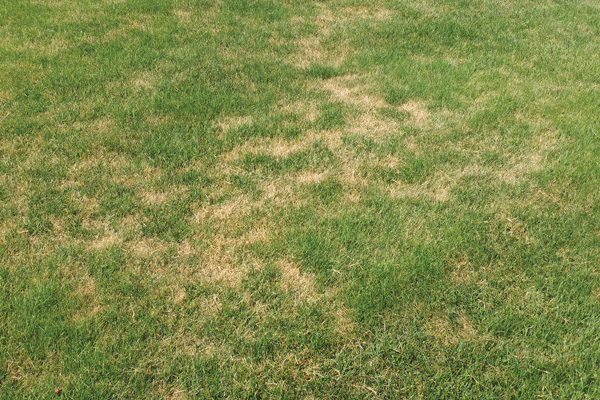
Summer patch can be identified by roughly circular patches of brown or tan turf.
Photo: Paul Koch
Warm weather brings many turf diseases — among them, summer patch.
Luckily, the more you know about this turf disease, the more powerful you are when it comes to defeating it.
Symptoms: Summer patch often appears in late summer and into fall, depending on your region. It produces roughly circular patches of brown or tan turf that are 1 to 3 feet in diameter. According to Nufarm, symptoms initially resemble drought stress. Check affected plants for blackened or rotted roots. Identifying summer patch can be difficult. Paul Koch, assistant professor of plant pathology at University of Wisconsin-Madison, recommends sending a sample to a local diagnostic lab or turfgrass extension specialist. The disease thrives in hot and humid conditions, Koch says, so cool-season turf that experiences prolonged stretches of heat and humidity has more severe summer patch than areas that are cooler or drier. For this reason, the Northeast and mid-Atlantic often experience worse summer patch than the Great Lakes, Midwest and Western regions, he adds.
Treatment: Applying acidifying fertilizers can be an effective preventive practice, Koch says. Fungicides may be applied once 2-inch soil temperatures reach about 60 degrees F and may be reapplied once or twice at 21-day intervals. Once symptoms are present, Koch notes, using an acidifying fertilizer alone or in concert with a fungicide is usually the fastest recovery strategy.

